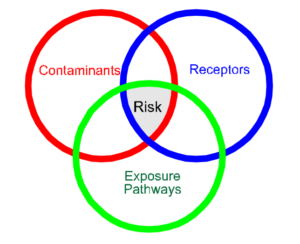Working On Contaminated Land: Health And Safety Guidelines For Contaminated Lands Assessment
The release of harmful materials, hazardous wastes, or oil into the environment should be prevented or controlled to avoid contamination of land. When land contamination is suspected or confirmed at any project phase, the source of the uncontrolled release must be identified and remedied to avoid subsequent releases and their negative consequences. The health and safety guidelines for contaminated lands allow for effective management of hazardous materials during a site investigation.
General health and safety guidelines for a contaminated land assessment

- Before beginning any site work, the organization must assess the risk of various contaminants to its employees in order to determine the amount of protection required. When operating as a subcontractor, the company must speak with the client ahead of time to determine the type and location of any risks, as well as the level of safeguards suggested for site work. The organization should also check to see if the client is providing any extra precautions to avoid or sufficiently control contamination, such as a portable hygiene facility or disposable clothing.
2. A flammable gas detector must be used in places where flammable gases may exist, such as abandoned mine workings or waste sites. Working in restricted locations necessitates the use of appropriate breathing apparatus.
3. When using the rig and equipment, workers must be cognizant of the risk of coming into touch with above and subsurface cables. Prior to beginning drilling, a CAT detector must always be utilized. Even if the client has already examined the site, this should be done.
4. On the contaminated site, no smoking, eating, or drinking is permitted.
5. Suitable protective clothing must be worn at all times on the contaminated site. The most common protective gear recommended in the health and safety guidelines for contaminated lands include:
(a) Overalls – to eliminate laundry issues, disposable overalls are chosen over washable overalls. In either situation, ample supplies should be available. PVC overalls have been proven to be necessary when working in damp conditions due to increased sweat. External pockets should be avoided in overalls to prevent impurities from being retained. Overalls should be tightly fitting at the ankles and cuffs, ideally elasticated, and have a hood for optimal protection. When disposable overalls are utilized, extra big sizes should be obtained to extend the life of the overalls. In the winter or wet seasons, thermal apparel may be required to prevent workers from wearing their own jackets over their overalls.
(b) Footwear: Safety wellingtons should be used, with the overalls pulled down over the footwear on the outside.
(c) Hand protection – Such as disposable gloves should be worn at all times to guard against abrasion and skin injury, as well as to keep pollutants from coming into contact with the skin. Some contaminants will necessitate the use of impervious gloves to prevent absorption through the skin.
(d) Respiratory protection equipment (RPE) should be provided if there is a risk of inhalation exposure. The type and concentration of chemicals, the duration of exposure, and the manufacturer’s performance criteria must all be considered when determining if RPE is “appropriate.”
(e) Eye protection – eye protection against splashes may be required.
(f) Ear protection should be worn by anyone operating within 10 meters of the rig.
6. Before disposal or wash, contaminated clothing should be packed in double-skin plastic bags and sealed. The laundry should be informed of the contamination in this scenario.
7. Before leaving the site, properly wash your boots, vehicle wheels, tracks, and equipment.
8. There is no need to remove any soils or waste from the site.
9. Wash hands and forearms carefully with soap, water and disinfectant gave after working with harmful soils.
10. After removing contaminated clothing and footwear, ensure that they are washed.
11. Make a point of immediately washing any cut, scratch, or abrasion of the skin. Then, using antiseptic and sterile gauze or plaster, cover the wound.
12. When working, avoid rubbing your nose and mouth with your hands.
13. Report any illness to your supervisor/director as soon as possible, and get medical attention.
14. Employees must submit to health surveillance if the firm deems it essential.
Additional Information Sources:
Learn more about the health and safety guidelines for contaminated lands in this simplified document. Or contact us for a design of contaminated land assessment.